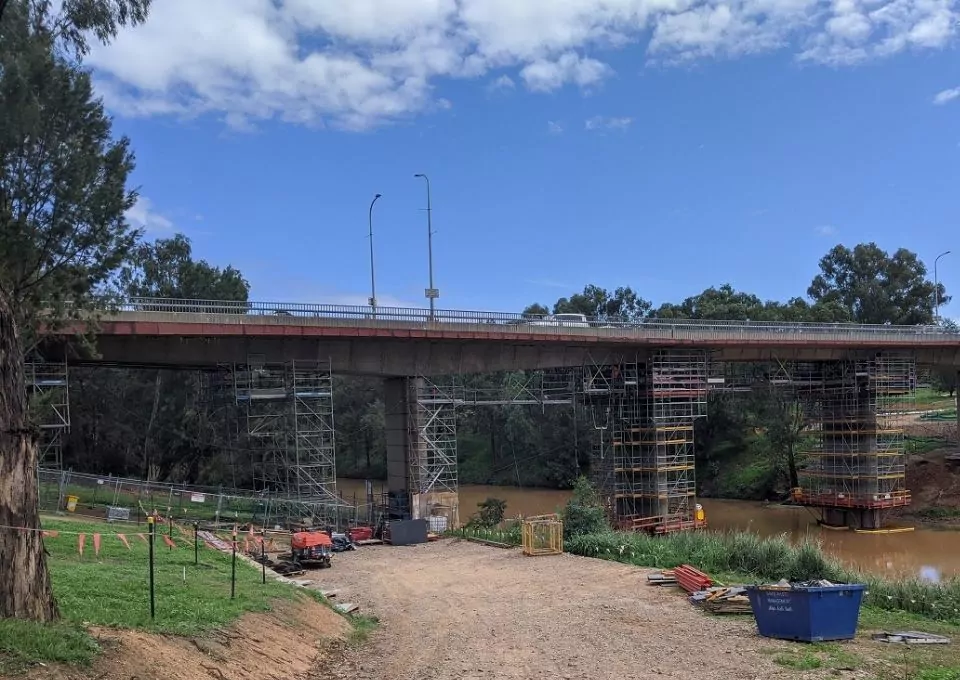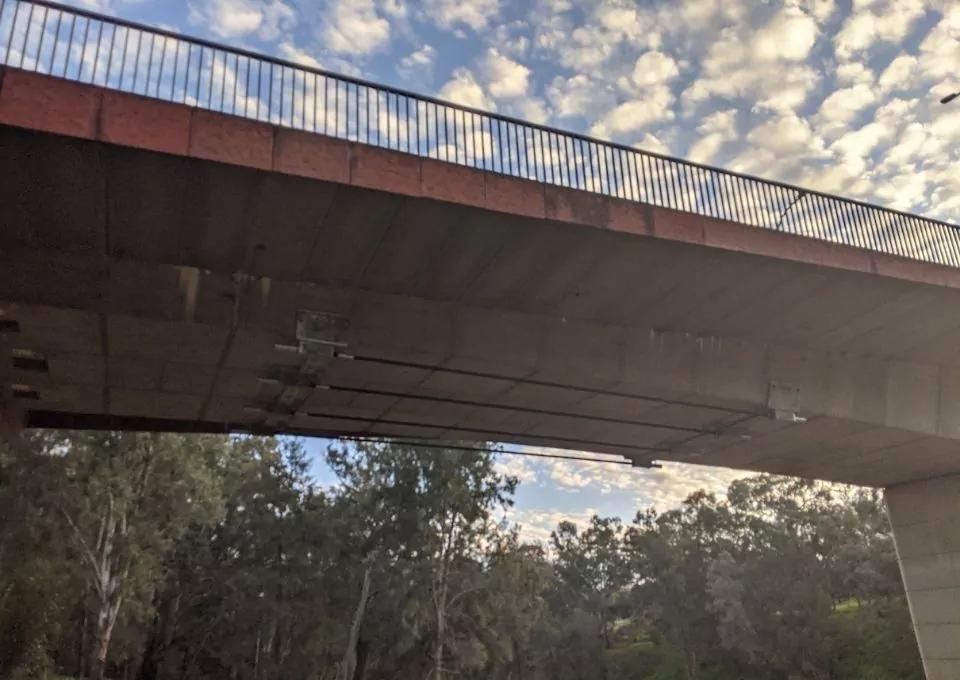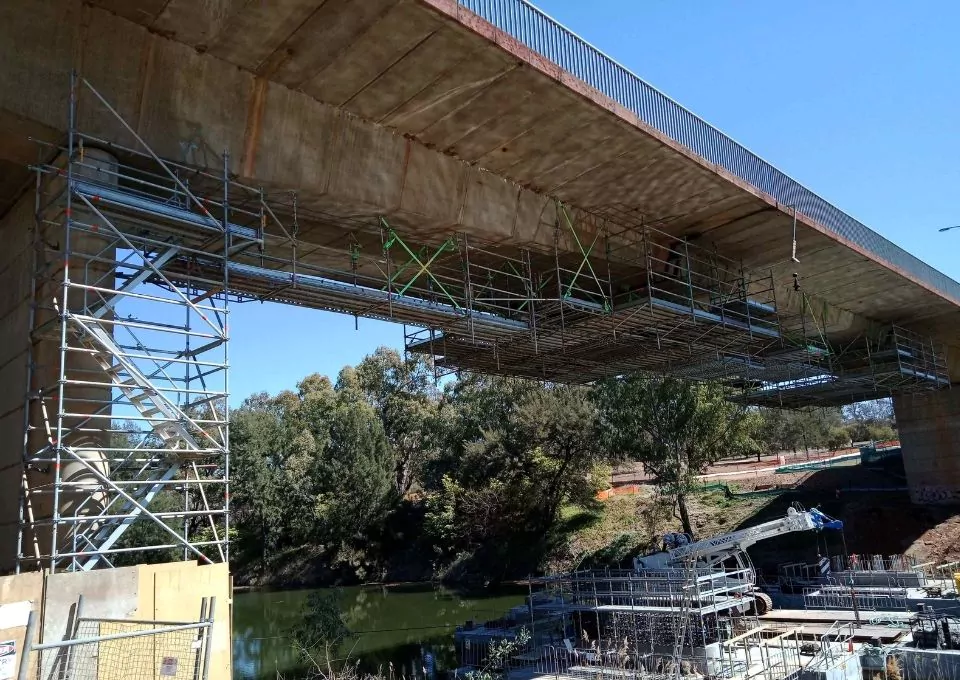
A combined solution for additional load capacity
Options to repair a sagging highway bridge on a modest budget were limited, so a combined solution was selected. Two new piers were built below the main span to offer extra support, and traditional strengthening techniques were applied to the superstructure. The measures were designed to make the 50-year-old bridge fit for the remainder of its 100-year design life, allow existing weight restrictions to be lifted, and deliver additional capacity for heavier vehicles.

